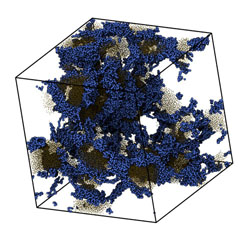
This course describes, besides the physical and mathematical background of the finite element method, special discretization techniques and algorithms which have to be applied for nonlinear problems of solid mechanics.
The course will describe the theory and computer implementation of nonlinear finite element method. The implementation will be carried out on simple heat transfer and solid mechanics problems.
The focus is on geometric nonlinearities; however some material nonlinearity will also be discussed. Both static and transient (time-dependent) problems will be studied.
The main textbook of the course is the book “An Introduction to nonlinear finite element analysis” by J.N. Reddy. The book is suitable as a text book for a first course as nonlinear finite elements in mechanical, civil, aerospace engineering departments.
Syllabus
- Introduction
- A review of finite element method
- 1D problems
- 2D problems
- Library of 2D finite elements
- Numerical Integration
- Computer Implementation
- 1D heat transfer problems
- Governing differential equation
- Weak formulation
- Finite element model
- Solution procedure
- Computer implementation
- Euler-Bernouli beams
- Timoshenko beams
- Model equation
- Weak form
- Finite element method
- Solution procedure
- Computer implementation
- Classical plate theory (CPT)
- Variational formulation of CPT
- Finite element models of CPT
- Computer Implementation of CPT
|
- Time approximation
- Stability and accuracy
- Transient analysis of nonlinear problems
- Computer implementation
- Numerical examples
- 2D Continuum Elements
- Introduction
- Strain and stress measures
- Strain and stress measures between configurations
- Constitutive equations
- Total and updated Lagrangian formulations
- Finite element methods of 2D continua
- Nonlinear elastic problems
- Small deformation theory of plasticity
- Numerical examples
- Nonlinear bending of beams
- 2D heat transfer problems
- Nonlinear bending of elastic plates
- Nonlinear analysis of 2D problems
- Finite element formulation of solid continua
- Material nonlinearity
|
Prerequisites:
- Finite Element I
- Continuum Mechanics


